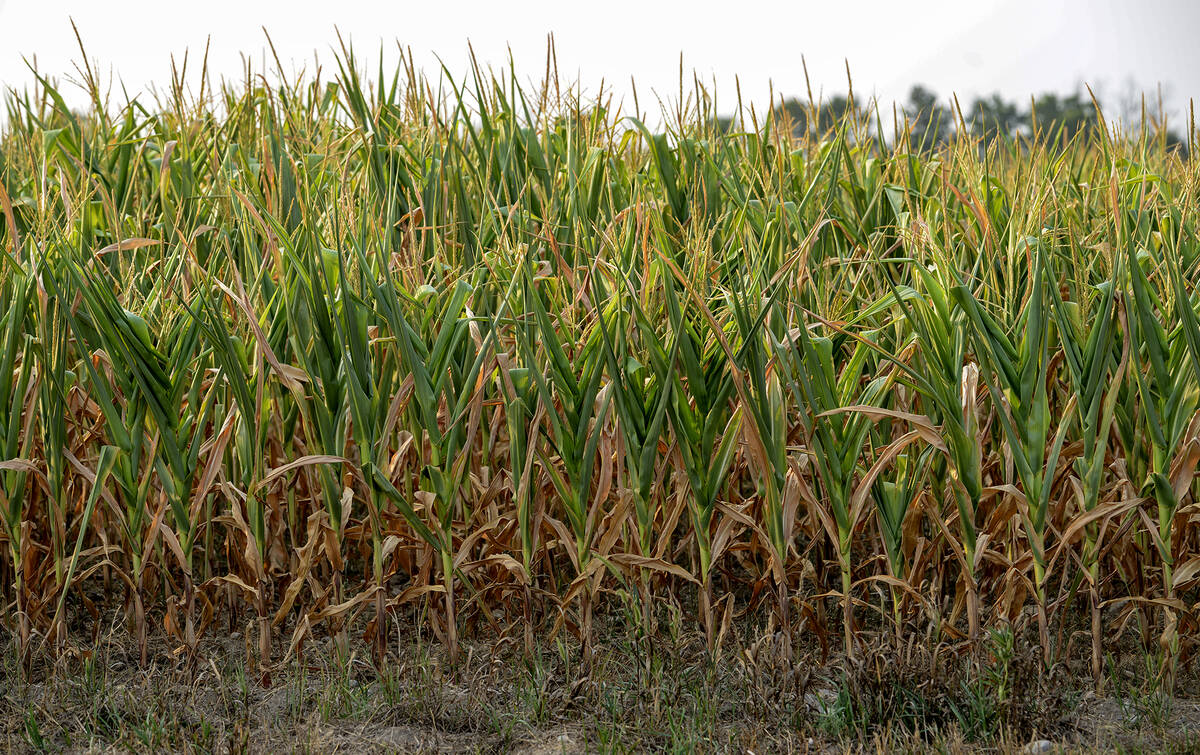According to Statistics Canada, Ontario farmers will increase corn acres by eight per cent compared to last year and Ontario soybean acres will see a year-over-year increase of three per cent. Last fall, Ontario farmers decreased winter wheat acres by 13 per cent from the previous year, which made room for the year-over-year increase in soybean and corn acres.
During April, the Ontario growing region received average precipitation while temperatures were a couple degrees below average. Farmers will plant into optimal conditions. At the time of writing this article, Ontario corn and soybean prices hovered at 52-week highs for both old and new crop positions. Producer selling basically comes to a halt during the planting period, which will support basis levels through May.
Quick look
Soybeans: Indonesia’s suspension of palm oil exports and Ukraine’s sunflower ban are driving vegetable oils to historical highs.
Corn: The U.S. EPA’s decision to allow E15 gasoline to be sold in the summer could enhance corn demand.
Wheat: Be prepared to store new crop wheat.
Read Also

Extreme variability marks Ontario’s 2025 corn crop
The yield potential of Ontario’s 2025 corn crop was lost in some areas due to extreme dry conditions.
Traders are focused on South American harvest progress and the North American planting pace. As of May 1, we estimate the Argentine corn harvest at 26 per cent complete, while approximately 48 per cent of the soybeans are in the bin.
The Brazilian soybean harvest is in the final stages. Brazil’s Safrinha corn crop will start coming on the export market in the latter half of May. U.S. farmers had planted 14 per cent of the corn crop as of May 1, down from 42 per cent last year and down from the five-year average of 33 per cent. U.S. soybean planting progress was rated eight per cent complete, down from last year’s progress of 22 per cent and down from the five-year average of 13 per cent. High speed planters have decreased the planting time so accelerated progress is expected.
If normal growing conditions materialize in the U.S., the corn and soybean futures have a strong seasonal tendency to trend lower through June and July. U.S. winter wheat harvest will begin at the end of May and move into full swing in June. The market functions to encourage demand during the harvest period.
The U.S. economy contracted by 1.4 per cent on an annual basis in the first quarter of 2022. A recession is defined by two consecutive quarters of negative growth. Recent data suggests the U.S. will contract during the second and third quarters as well. History tells us that the Canadian dollar depreciates significantly when the U.S. economy experiences recession. High inflation, left wing government policies, slower growth in China along with the negative effects of the Russian invasion will continue to weigh on U.S. economic growth.
Soybeans
Ontario farmers plan to plant 3.03 million acres of soybeans this spring, up 3.1 per cent from 2.936 million acres last year. Using a traditional abandonment rate and a five-year average yield, production has potential to finish near four million tonnes, down marginally from the 2021 output of 4.1 million tonnes.
Ontario crusher bids reached a historical high just over $22/bu. during the last week of April. Canadian crop year-to-date domestic usage for the week ending April 24 was 1.3 million tonnes, up from 1.1 million tonnes last year. Strength in the vegetable oil complex continues to drive the crush margin structure. The domestic market is functioning to ration demand through higher prices. Domestic crushers will take downtime for upgrades and maintenance during the summer. However, we expect the domestic crush to run in high gear through the first half of July.
On April 27, Indonesia suspended palm oil exports. Palm oil composes about 55 per cent of the world vegetable oil trade and Indonesia provides about 50 per cent of the world palm oil exports. This comes on the heels of the Ukraine sunflower and sunflower oil export ban earlier in March. All stars have aligned to drive vegetable oil prices to historical highs.
The drought in Western Canada resulted in lower canola production last year. Higher energy prices have also enhanced the price structure for vegetable oils but we now find oil for food use at a sharp premium to the energy complex. We have to remember that 80 per cent of the soybean is a feed product and there is no significant substitute for soybean meal. World soymeal prices experienced a supply squeeze earlier in March but have since come off the highs. Argentina is the world’s largest soymeal exporter and the onset of harvest has alleviated this tightness.
Argentine soybean production is estimated at 43.5 million tonnes, down from 46.2 million tonnes last year. Brazilian output is projected to finish near 125 million tonnes, down from the year-ago crop of 139.5 million tonnes. South America has lower production; this is certain. Remember, last year these two countries had a record carryout and will have a combined ending stocks of 42 million tonnes this year. Higher prices will pull supplies out of farmers hands. U.S. production is expected to reach 124.1 million tonnes this year, up from the 2021 output of 120.7 million tonnes. By comparison, the U.S. ending stocks range from six to eight million tonnes in a normal year.
What to do: We’ve advised Ontario farmers to be 90 per cent sold on old crop and 10 to 15 per cent sold on new crop. This week, we’re advising farmers to sell the final 10 per cent increment of their 2021 production, bringing total sales to 100 per cent. For new crop, let’s stay at 10 to 15 per cent sold until the upcoming production is more certain.
Corn
Ontario farmers will plant 2.322 million acres of corn this spring, according to Statistics Canada. This is up 8.1 per cent from the 2021 planted area of 2.146 million acres. Using a traditional abandonment rate and a five-year average yield, production has potential to reach 9.7 million tonnes, up from the 2021 output of 9.5 million tonnes. Ontario corn prices are competitive on the world market, enhancing export demand. Canadian crop year-to-date corn exports were 1.041 million tonnes, up from 823,000 tonnes last year. Western Canada remains an importer of corn due to the drought last year so all corn exports are from Eastern Canada, mainly Ontario.
At the time of writing this article, Brazilian corn offers were quoted at US$353/tonne f.o.b. Paranagua; French corn was offered at US$345/tonne f.o.b. La Pallice; U.S. offers for were US$365-$375/tonne depending on quality f.o.b. the Gulf. Ontario corn is priced in line with French origin to destination including United Kingdom and Ireland. Canadian corn exports have picked up over the past couple weeks.
On April 29, the U.S. Environmental Protection Agency issued an emergency fuels waiver to allow E15 gasoline — gasoline that uses 15 per cent ethanol blend —to be sold during the summer driving season. This E15 gas has been sold 20 to 30 cents a gallon below regular gasoline over the past couple months. This waiver, along with the current pace of corn usage, may enhance corn demand by 25 million bushels on the 2021/22 balance sheet.
China has been actively buying U.S. corn over the past few weeks. However, if China was not in the market, export corn sales for U.S. corn would be at seasonal lows. When the Ukraine implemented an export ban on corn, China had about five million tonnes of unexecuted sales on the books. China has almost covered all this volume from the U.S. Therefore, Chinese demand is expected to subside from June through September unless adverse conditions materialize. They will not keep buying with prices at the roof.
Brazilian corn output is estimated at 116 million tonnes, up from 87 million tonnes last year. Argentine corn production is projected to reach 53 million tonnes, up from 52 million tonnes last year. The increase in Brazilian production and exports will offset a larger portion from the Ukraine shortfall. Brazil’s harvest will move into high gear in June. Once the U.S. planting progress is more than 50 per cent, the risk premium due to uncertainty in production comes out of the market if the crop is developing under reasonable conditions. U.S. export sales will slow in June and July.
What to do: This week, we’re advising farmers to sell their final 15 per cent increment of their 2021 production, bringing total sales to 100 per cent. We’ve advised producers to be 10 per cent sold on expected new crop.
Wheat
Winterkill over the winter was slightly larger than earlier anticipated. Winter wheat acres remaining this spring were reported to be 844,100 acres, down 22 per cent from the remaining acres of 1.080 million last year. Ontario winter wheat production is projected to come in at 1.952 million tonnes, down from the 2021 crop size of 2.672 million tonnes.
Ontario wheat stocks drop to bin bottom levels at the end of the 2021/22 crop year. Given the year-over-year decrease in production, the Ontario market will remain elevated to U.S. and world values to limit export movement. Usually, we see about 400,000 tonnes of wheat move into feed channels. If the crop is decent quality, there will be no winter wheat moving into local feed markets this fall because of the tighter supply situation.
The U.S. Southern Plains received below normal precipitation during April, resulting in yield drag on the hard red winter wheat crop. We’re forecasting U.S. hard red winter wheat production to come in at 17 million tonnes, down from the 2021 crop size of 20.4 million tonnes. U.S. soft red winter wheat is 10 million tonnes, up marginally from the 2021 output of 9.8 million tonnes. We’re looking for a marginal increase in demand for U.S. winter wheat next year, which will result in a historically tight carryout.
In Europe, soft wheat production (wheat excluding durum) is expected to come in at 130 million tonnes, unchanged from the 2021/22 output. There are no concerns regarding production in the main countries of Germany and France. Private forecasters have the upcoming Russian crop in the range of 85 to 87 million tonnes, up from the 2021 output of 75.2 million tonnes. This could allow Russia to export 43 million tonnes, up from the 2021/22 export forecast of 33 million tonnes. The Ukraine is on the drier side but timely rains are expected. Despite the crop size, we don’t expect Ukraine to be exporting any cereal grains in the 2022/23 crop year.
Western Canadian farmers are expected to increase planted area by seven per cent from last year to 17.6 million acres. Canadian non-durum spring wheat production is expected to finish near 23.4 million tonnes, up from the 2021 output of 16 million tonnes. The spring wheat crop is expected to be planted seven to 10 days behind normal and the trend in weather is cold and wet for the eastern half of the prairies. We’re looking for Western Canada to produce six to seven million tonnes of actual feed wheat this year.
What to do: This week, we’re advising farmers to sell the final 15 per cent increment of their 2021 production, bringing total sales to 100 per cent. We’re not making any sales recommendations for new crop. We’ll see some pressure on the U.S. wheat market during the summer because the U.S. farmer sells 50 per cent of the crop during the period. The main U.S. harvest will be followed by Europe and Russia during July. Be prepared to store your wheat. The Ontario harvest occurs in late July or early August, which is typically the lowest price of the year.













